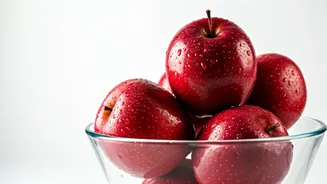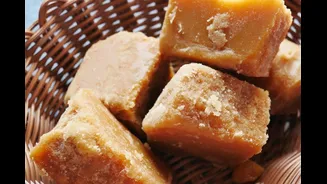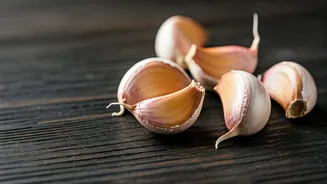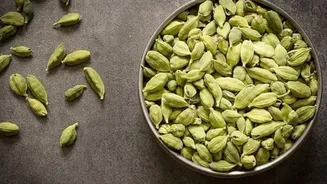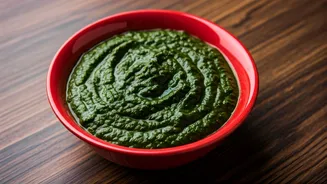The Apple's Shiny Secret
Apples often appear brilliantly polished, a sheen that can be more than just natural. The waxing process is frequently employed to improve the apple's
appearance and prolong its shelf life, a practice employed from the past. However, this wax coating might not always be desirable. In many cases, it involves the use of substances like shellac or other food-grade waxes. While considered safe for consumption, some individuals may prefer to avoid them. Furthermore, these waxes can trap pesticides and other residues, raising health concerns. Therefore, understanding and implementing simple removal techniques becomes important for enjoying a truly natural and healthy snack. Fortunately, several easy methods exist to effectively remove this coating, making your apples safer and more enjoyable to consume. The following sections will detail these techniques and provide a guide on how to implement them at home.
Warm Water Wash
The most fundamental method involves using warm water to remove the wax. Fill a bowl with warm (but not boiling) water, and gently submerge the apple. The warmth helps to soften the wax, making it easier to wash away. Use your hands or a soft cloth to gently rub the surface of the apple. Avoid scrubbing too vigorously, as you don't want to damage the skin. After washing, rinse the apple under cold running water to remove any remaining residue and ensure a clean finish. This process helps to eliminate surface contaminants and waxes. It is a straightforward and readily accessible method that doesn't require any extra ingredients. Always ensure the water temperature is comfortable to prevent accidental burns or damage to the fruit's skin. This method serves as a good starting point for wax removal.
The Baking Soda Scrub
Baking soda, a common household staple, is a gentle abrasive that can effectively lift wax from apple skins. Combine warm water with a teaspoon of baking soda in a bowl. Submerge the apple in the solution, and use a soft brush or your hands to gently scrub the apple's surface. The baking soda acts as a mild abrasive, helping to dislodge the wax and other residues. Be sure to reach all areas of the apple to ensure thorough cleaning. After scrubbing, rinse the apple thoroughly under cold water to eliminate any baking soda residue. This method provides an extra layer of cleaning, ensuring any wax residues are adequately removed. It’s important to avoid using excessive baking soda or harsh scrubbing, as this could damage the apple's skin. It is also important to remember that using a gentle approach will yield the best results. A properly scrubbed apple will have a cleaner feel.
Vinegar's Cleaning Power
Vinegar, known for its cleaning properties, can also assist in removing wax from apples. Create a solution by mixing equal parts white vinegar and water in a bowl. Immerse the apple in this solution for a short period. The vinegar will help to dissolve the wax coating. After soaking, gently rub the apple's surface with a clean cloth or your hands. This aids in removing the loosened wax. Then, rinse the apple under cold water to eliminate any vinegar taste or residue. While vinegar is effective, some individuals may find its smell unpleasant. Make sure the apple is completely rinsed to avoid any lingering sourness. This approach provides a practical alternative. Make sure to only use white vinegar. Other types of vinegar may have different effects on the apple’s skin. Make sure the water and vinegar solution is properly balanced.
The Lemon Juice Solution
Lemon juice, with its natural acidity, is another effective option for removing wax. Combine equal parts lemon juice and water in a bowl. Submerge the apple and allow it to sit for a few minutes. Gently rub the apple with a clean cloth, ensuring the entire surface is addressed. The citric acid in lemon juice helps to break down the wax. Afterward, rinse the apple thoroughly with cold water to remove the lemon juice. Lemon juice is a natural cleaning agent and leaves a fresh scent. However, it's essential to avoid prolonged soaking, as excessive exposure to lemon juice can potentially impact the apple's taste. The combination of lemon juice and water can offer a pleasant cleaning experience and is a readily accessible method. It’s also important to ensure all traces of the lemon juice are washed away.
The Apple-Saving Steam
Steaming the apple is a unique method for removing wax. Carefully hold the apple over a steaming pot of water for a short time. The heat from the steam softens the wax, making it easier to remove. Use a soft cloth to gently wipe the apple's surface while it is still warm, which will lift the softened wax. Be extremely cautious while handling a steaming apple to prevent burns. Steaming is a relatively gentle method that utilizes heat to facilitate wax removal. This approach is most effective when the steam is not too hot. Avoid direct contact between the apple and the steam source to ensure the apple doesn't become overly cooked or damaged. Afterward, rinse the apple under cold water and ensure the apple is completely dry before consumption. This method provides a useful alternative for those who prefer to avoid chemical-based solutions and is also a good final step after any other method.
